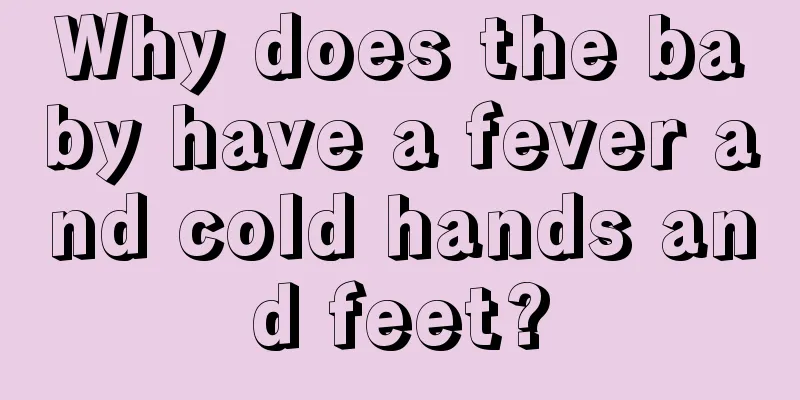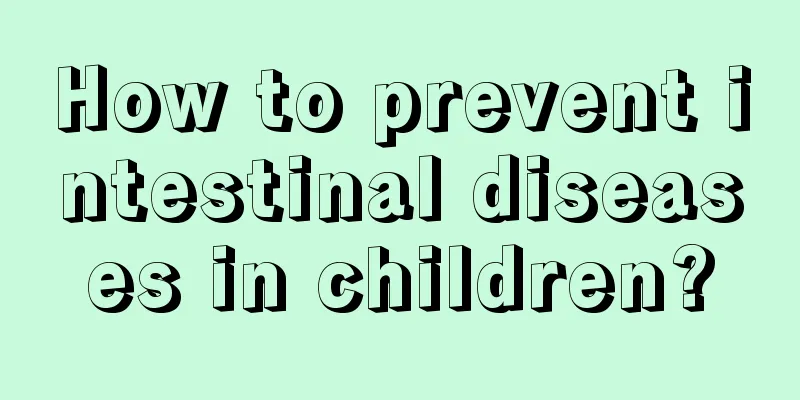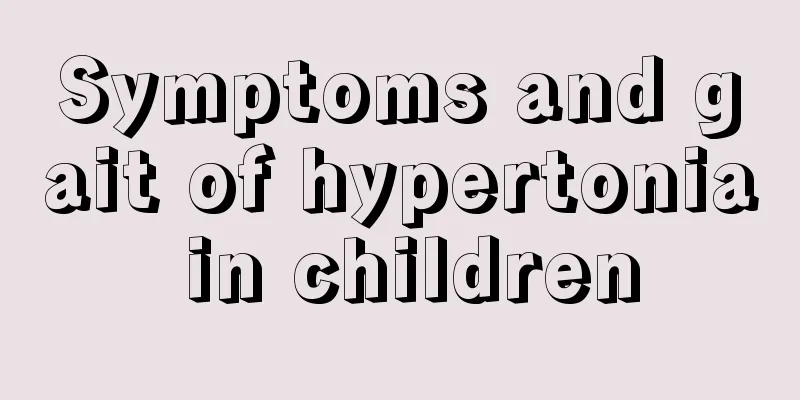Why does the baby have a fever and cold hands and feet?

|
When a baby is sick and has a fever, it makes every parent extremely anxious. Since the functions of various parts of the baby's body have not yet fully developed and their resistance is weak, they are prone to getting sick and having a fever when exposed to inappropriate external factors. For example, due to climatic reasons, changing clothes and taking off clothes due to sudden changes in temperature can cause the baby to get sick and have a fever. So why does a baby have a fever and cold hands and feet? Let me give you a brief introduction below. How many degrees is a fever? Taking the axillary temperature as an example, the normal body temperature is between 36 degrees Celsius and 37.4 degrees Celsius. Generally, 37.5-38.5 is low fever, 38.1-39 is moderate fever, and 39.1-40.4 is high fever. 40.5 and above is considered a very high fever. Why are your hands and feet cold? Having a fever but cold hands and feet is a phenomenon of false cold and true heat, which is especially common in infants and young children under 3 years old. This is mainly because babies (especially infants) have less blood in their limbs than in their internal organs. Due to insufficient blood supply to their limbs, they are more likely to feel cold than adults. In addition, the baby's nervous system is not yet fully developed, and the autonomic nerves responsible for managing vasodilation and contraction are prone to disorder, causing the small blood vessels at the ends of the limbs to be in a spasmodic contraction state and become cold when the high fever first occurs. Ambient temperature Because children's central nervous system is not yet fully developed, their ability to regulate body temperature is imperfect. If the ambient temperature is low, children's hands will be exposed to the outside for a longer period of time, so their hands and feet will become cold. Physical cooling 1. First of all, we can't wrap the child with thick clothes, we must make sure the clothes are loose. Reduce the amount of clothing on your child. This helps the child dissipate excess body heat. 2. Let your child drink more water, as drinking water helps regulate body temperature. Because the body temperature is too high during a fever, more water evaporates from the body than usual, so drinking more water can help regulate body temperature. 3. If you can use 35-38℃ water to give your child a warm bath at home, this will help dissipate the child's body temperature. Or wipe your child's whole body with warm water. Through the above introduction, we roughly know that the situation where babies have fever and cold hands and feet is mostly caused by insufficient blood supply to the baby's limbs. In this case, parents should promptly cool down the baby physically and help rub the baby's limbs, hands and feet appropriately. If your baby has a high fever, you should go to the hospital for examination and treatment in time. |
<<: How to avoid eating milk powder when the baby coughs
>>: What to do if your baby has a low-grade fever and cough
Recommend
What is the reason why children are prone to nosebleeds?
Children are prone to nosebleeds. Parents should ...
Is urticaria serious in children?
Babies are very susceptible to urticaria because ...
What causes indigestion in children?
In life, our mothers may not give their children ...
Baby cries as soon as he wakes up
Many parents are extra caring when facing their n...
What is the cause of the red spots on the soles of my children's feet?
The amount of exercise done by the feet is very l...
Tips for getting rid of acne in middle school
For junior high school students, because they hav...
What should I do if my child has an acute asthma attack?
From the day a child is born, he or she becomes t...
What should I do if my child has diarrhea?
In my country, diarrhea in children is the second...
Is it normal for babies to cough occasionally?
Babies have relatively poor resistance, and are p...
What to do if your three-year-old child has knee pain
Children's bodies are relatively weak because...
What should I do if my child has a fever and his palms and feet are cold?
Children's fever is a common problem in life....
What are the symptoms of diarrhea in newborns?
The problem of neonatal diarrhea is a phenomenon ...
The child does not cough when sleeping but coughs during the day
Coughing is a common symptom. Different coughs re...
What to do if your one-year-old baby has conjunctivitis
Conjunctivitis is a common problem in life. It is...
What's wrong with my child's cold hands, dizziness and chest tightness?
Children's physical development is very fast,...









